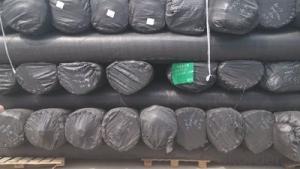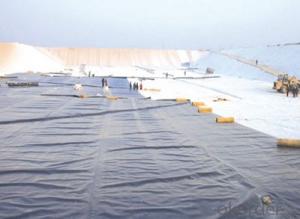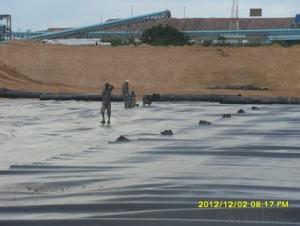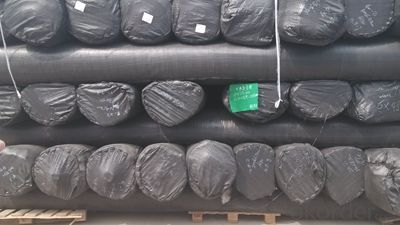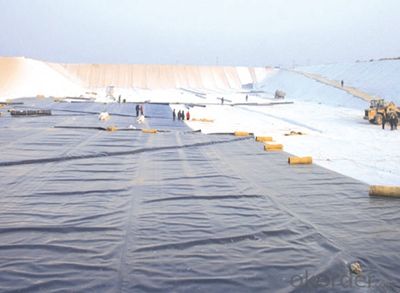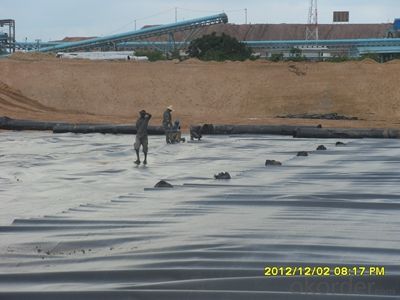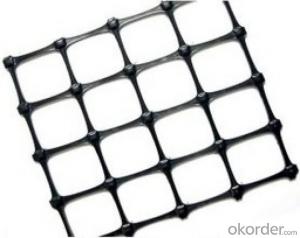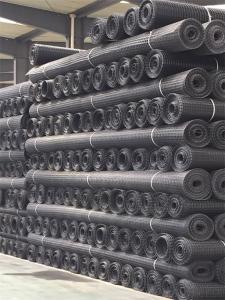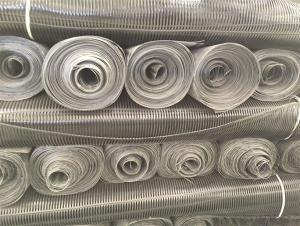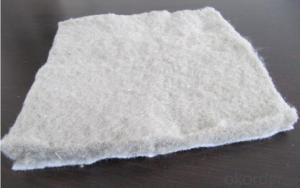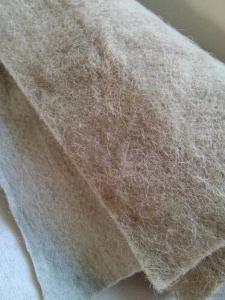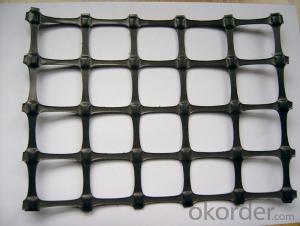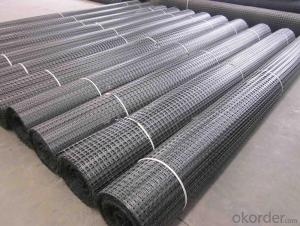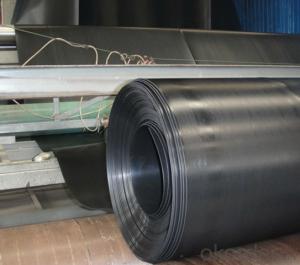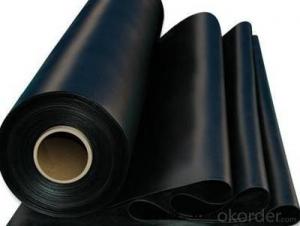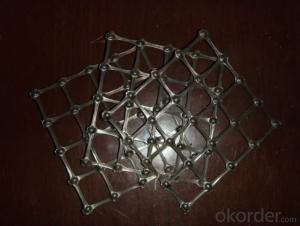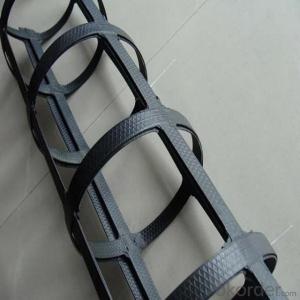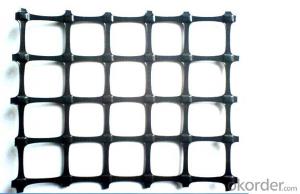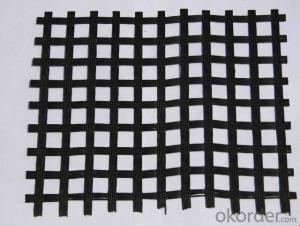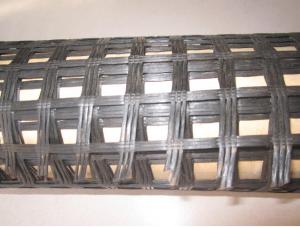HPA Geocells LLDPE Geomembrane for Environmental, Water Conservancy, and Landfill Projects
- Loading Port:
- Tianjin
- Payment Terms:
- TT OR LC
- Min Order Qty:
- 88 m²
- Supply Capability:
- 1800000 m²/month
OKorder Service Pledge
OKorder Financial Service
You Might Also Like
Introduction of CNBM
China National Building Materials (Group) Corporation (CNBM) is a state-owned enterprise in charge of administrative affairs in China building materials industry. Established in 1984, CNBM is a large group corporation of building materials with total assets of RMB 25 billion and a total staff of 30,000. Now CNBM owns more than 200 subsidiaries in and abroad the country, including wholly-owned corporations and joint ventures.
FAQ of geosynthetics :
What is geosynthetics ?
Geosynthetics form a perfect erosion control fabric used extremely widely in civil engineering to stabilize and reinforce slopes and soil under or next to roads, railways, dams, water reservoirs etc.. They can be easily applied which minimizes the time of construction, as well as they limit the resources and materials necessary.
What kinds of geosynthetics we have ?
Non-woven geotextile, geogrids, geocells, GCL, Geomembranes, Geonets, Geocomposites etc .
What is the geosynthetics used for ?
Hydraulic
Lagooning and Water Treatment, Ornamental Ponds, Golf Courses
Aquaculture and Desalination,Water Lagoons,Tanks, Reservoirs, Liquid Waste,Floating Cover Solutions, Drainage and Filtration
Environment
Tailing ponds, Leach mining,Landfills,Landfill Capping,Protection against corrosion,Vertical Barriers
Civil Works
Erosion Control,Secondary Containment,Tunnels,Linear and Surface Works,Consolidation of Margins,Soil Reinforcement,Soil Separation.
Building - Parkings,Roofing,Soundproofing
The description of HDPE Geomembrane for Environmental Projects water conservancy projects landfill mining canal
Geomembranes are impermeable geosynthetics that, until recently, were mainly used as canal and pond liners. However, modern technology has broadened liner applications to include landfills, wastewater treatment lagoons, oil and gas exploration (including hydraulic fracturing or "fracking"), aquaculture, irrigation ponds and remediation. In many of these applications, a nonwoven geotextile is used as a cushion to protect the geomembrane. In general, geomembrane liners offer excellent puncture resistance and can withstand a wide range of chemicals and temperatures. They are also highly flexible and conform well to the subgrade.
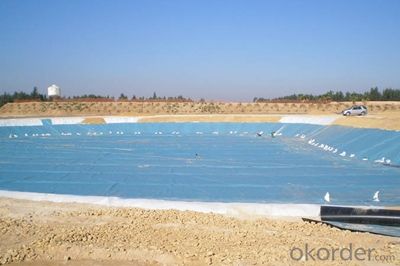
The description of LLDPE Geomembrane for Environmental Projects water conservancy projects landfill mining canal
Geomembranes are impermeable geosynthetics that, until recently, were mainly used as canal and pond liners. However, modern technology has broadened liner applications to include landfills, wastewater treatment lagoons, oil and gas exploration (including hydraulic fracturing or "fracking"), aquaculture, irrigation ponds and remediation. In many of these applications, a nonwoven geotextile is used as a cushion to protect the geomembrane. In general, geomembrane liners offer excellent puncture resistance and can withstand a wide range of chemicals and temperatures. They are also highly flexible and conform well to the subgrade.
Specification of LLDPE Geomembrane for Environmental Projects water conservancy projects landfill mining canal:
I. Thickness: 0.3mm-3. 0mm
2.4m-9m in roll width, the length as client ' s request
Features or Property of LLDPE Geomembrane for Environmental Projects water conservancy projects landfill mining canal:
I. Good flexibility
2. For service temperature range: -700C-+1IOoC
3. Corrosion resistance, aging resistance
4. Excellent environmental stress cracking resistance property
5. High tensile strength and elongation
Application of LLDPE Geomembrane for Environmental Projects water conservancy projects landfill mining canal:
I. Municipal environmental projects, water conservancy projects
2. Landfill cap(closures), mining heap leach pads
3. Pond liner, canal linings, tank linings, raw water treatment reservoirs, retention ponds
4. Waste water treatment lagoon, secondary containment
Production standard:
I. GB/T17643-2011
2. CJ/T276-20083. GRI-GM17
- Q: What are the countries of China's anti dumping
- 1) flat field: laying 50cm thick sandstone gravel or sand and gravel cushion compaction (egg) is conducive to increase frictional resistance between soil and geogrid to base consolidation 2) should pay attention to the connection between laying grille grille and vertical grille grille straight smooth laying according to the design position along the road to base
- Q: What are the different installation methods for geogrids?
- There are several different installation methods for geogrids, including mechanical, adhesive, and soil wrap. Mechanical installation involves securing the geogrid to the soil using spikes or anchors. Adhesive installation involves using a special adhesive to bond the geogrid to the soil or other materials. Soil wrap installation involves wrapping the geogrid around soil or other materials to provide reinforcement. The specific installation method used depends on the project requirements and the type of geogrid being used.
- Q: How do geogrids help in pavement design?
- Geogrids help in pavement design by providing reinforcement and stabilization to the pavement structure. They distribute the load and improve the overall strength and performance of the pavement, reducing the chances of cracking, rutting, and other forms of distress. Additionally, geogrids enhance the longevity and durability of the pavement, reducing maintenance requirements and costs in the long run.
- Q: Can geogrids be used for slope stabilization?
- Yes, geogrids can be used for slope stabilization. Geogrids are engineered materials made from polymers that are used to reinforce and stabilize slopes. They are typically installed in a grid-like pattern and provide strength and stability to the soil, preventing erosion and reducing the risk of slope failure.
- Q: What is the elongation of fiberglass geogrid?
- Hope to help you
- Q: What are the specifications of the geogrid for road use?
- Warp knitted grating
- Q: Are geogrids resistant to acid degradation?
- Yes, geogrids are typically resistant to acid degradation.
- Q: Are geogrids suitable for reinforcing landfill liners?
- Yes, geogrids are suitable for reinforcing landfill liners. Geogrids are commonly used in landfill construction to enhance the stability and strength of liners, preventing soil erosion and improving overall performance. They provide additional reinforcement to the liner system, enhancing its durability and longevity. Geogrids also help to distribute loads and reduce settlement, ensuring the integrity of the landfill liner.
- Q: As well as how to fill out the form, thank you!! Urgently
- Inspection application approval form, elevation table, flat position detection table, geosynthetics site inspection form, evaluation form
- Q: What are the long-term durability characteristics of geogrids?
- Geogrids have excellent long-term durability characteristics. They are designed to withstand harsh environmental conditions, including high temperatures, moisture, and chemical exposure. Geogrids are made from high-strength materials, such as polyester or polypropylene, which provide resistance against degradation and maintain their structural integrity over time. They have a long service life and can effectively retain soil, stabilize slopes, and reinforce paved surfaces for many years without significant deterioration.
Send your message to us
HPA Geocells LLDPE Geomembrane for Environmental, Water Conservancy, and Landfill Projects
- Loading Port:
- Tianjin
- Payment Terms:
- TT OR LC
- Min Order Qty:
- 88 m²
- Supply Capability:
- 1800000 m²/month
OKorder Service Pledge
OKorder Financial Service
Similar products
Hot products
Hot Searches
Related keywords
